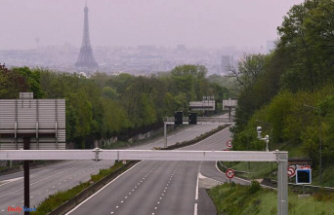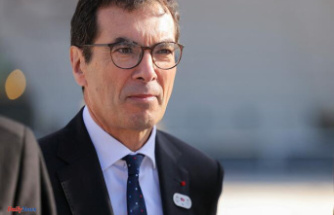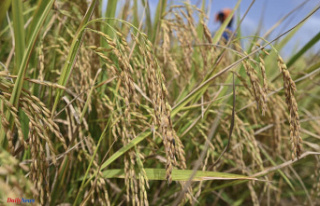Great writer of the World, where he spent almost his entire career as an economic journalist, Alain Vernholes died Tuesday January 16 in his family home in Rémalard (Orne), at the age of 88. For those who worked with him within the newspaper, where he spent more than three decades analyzing and commenting on the macro-economy, but also for his interlocutors, whether they are ministers, economic forecasters or simply peers, he had approached all subjects rigorously while defending the idea of the independence of the press.
Son of a country doctor and fourth of five children, Alain Vernholes was born on November 15, 1935 in the house where he spent his childhood, on the lands of Perche which he loved to travel. After studying philosophy, then economics, coupled with a diploma from the Journalists' Training Center, he began by working for two years at Les Echos before joining, in 1962, the economics department of Le Monde, then headed by Hubert Beuve-Méry.
A journalist responsible in particular for public finances and taxation, he was subsequently named head of the macro-economics department. Fierce defender of the specialization of “rubricards”, as opposed to “leapfrog” journalism consisting of moving from one section to another, he deepens through practice a perfect knowledge of his fields, which earns him notoriety and respect of the profession.
Pedagogy
It was during this long period spent acutely assessing the nation's accounts and tracking down possible deviations that his colleagues would give him the title of "budget pope", which he rejected with a smile. The fact is that every year, in the fall, when the Minister of the Budget or the Minister of the Economy invited journalists at the end of the afternoon to present and comment on the expenditure and revenue of the French State, he did not It was not unusual to see colleagues (few in number at the time) arriving with, under their arms, the edition of the “evening newspaper”, fresh off the presses. There we found, prominently, the three or four pages written by Alain Vernholes describing in detail the content of the budget which the tenant of Rivoli would have liked to announce himself... A ritual which, ultimately, amused more than it annoyed.
The recognition of his skills but also of his spirit of independence had led Alain Vernholes (who had refused to receive the Legion of Honor on the recommendation of a minister), to be chosen by his peers to chair the Association for several years. economic and financial journalists (AJEF). With the help of his colleague Gérard Horny, in 2005 he created the AJEF Amphis, which welcomed, for eleven years, a number of personalities from the economic, political or academic world such as Jean Tirole, Daniel Cohen, Marylise Léon, Marcel Gauchet or Mario Monti. The idea of this evening university was to comment, for varied audiences, on the major economic and philosophical issues of the moment. An intense educational work that he continued following his departure from Le Monde in 1996, at the age of 61.
After a stint at Agefi, in 1998 he joined the newspaper La Croix. In his weekly column, which he will keep until 2015, he naturally addresses the economic question but also social subjects that are close to his heart, with a philosophical perspective. He also collaborates with the journal Sociétal and publishes articles in Commentaire, notably “Presse presse: le jardin des temptations”, in 2003.
A “red orchestra” in Perche
Alain Vernholes devoted a large part of his life to this journalistic activity that he loved so much. But there is another passion, less known, which led him to spend so many beautiful years, this time in the trees, by creating from scratch the magnificent Arboretum of Boiscorde, on his native lands of Rémalard. It was during an economic report for Le Monde in Quebec and the northeast of the United States, at the time of the Indian summer, that the wonder occurred.
But the journalist was not content with admiring: after several family trips, he never stopped reproducing the blaze of autumn colors that had seduced him. From there was born this “red orchestra” made of Canadian sugar maples of course, but also of little-known oaks and hornbeams, golden yellow carya and, little known in Europe, Nyssa sylvatica, the Indian tupelo . On the eastern side, there are also Armenian oak, Chinese pistachio trees, numerous Japanese maples and Gingko biloba. Rare subjects in France which harmonize with the landscape of Perche and their European cousins.
If this craze coincided with a revival of the French taste for gardens, it was coupled with a curiosity and learning specific to the journalist that he never ceased to be. From 1982, Alain Vernholes was able to bring his wife, Michèle Champenois – also a journalist at Le Monde, where they met in 1968, attracted by cities and architecture – into this ambitious adventure – as well as their son Antoine, who took over. In forty years, while becoming true connoisseurs, they managed to transform the initial 4 hectares into a varied and hilly landscape of almost 20 hectares today, where several hundred large trees are available to visitors, schoolchildren, amateurs or botany enthusiasts.
The Boiscorde Arboretum thus allowed Alain Vernholes to carry out the work of his second life, a passion that he had established as a true mission of general interest, while ecology and the love of nature were to become a priority for everyone.












